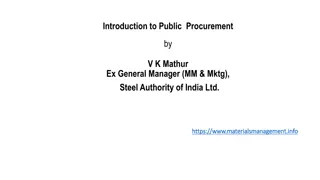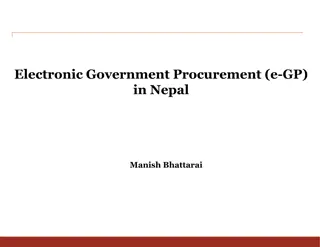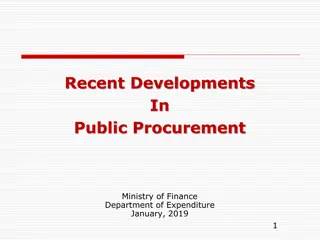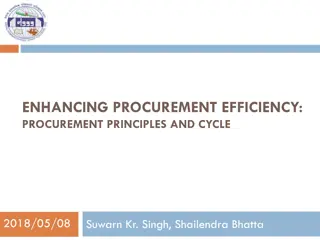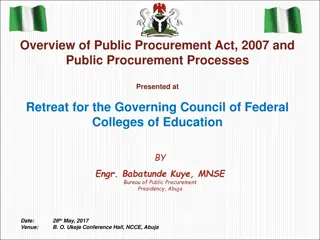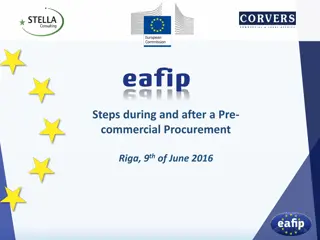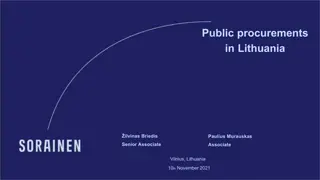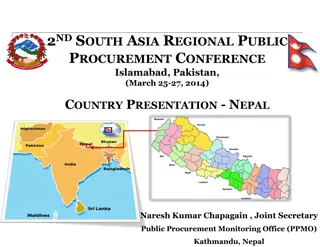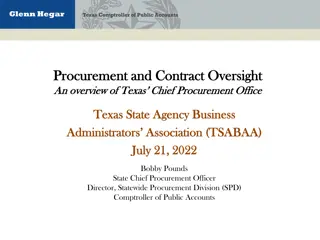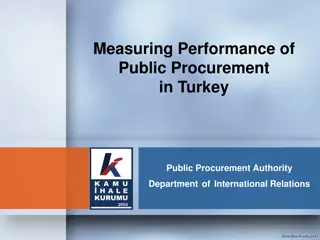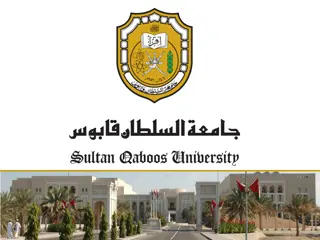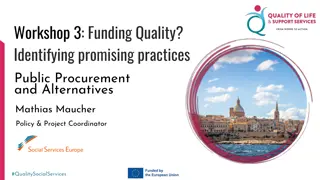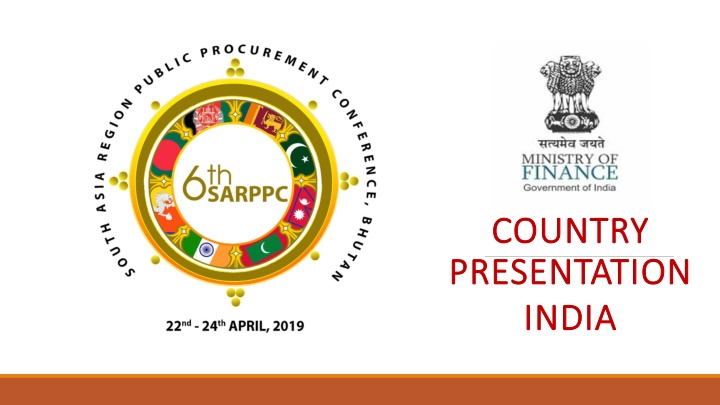
Legislative and Regulatory Developments in Public Procurement
Revision of General Financial Rules in 2017 enabled a modernized procurement landscape in India, with the introduction of electronic procurement and initiatives like Purchase Preference for MSMEs and Startups. The Central Public Procurement Portal and Government e-Marketplace have revolutionized public procurement practices, facilitating transactions worth billions of dollars annually.
Download Presentation

Please find below an Image/Link to download the presentation.
The content on the website is provided AS IS for your information and personal use only. It may not be sold, licensed, or shared on other websites without obtaining consent from the author. If you encounter any issues during the download, it is possible that the publisher has removed the file from their server.
You are allowed to download the files provided on this website for personal or commercial use, subject to the condition that they are used lawfully. All files are the property of their respective owners.
The content on the website is provided AS IS for your information and personal use only. It may not be sold, licensed, or shared on other websites without obtaining consent from the author.
E N D
Presentation Transcript
COUNTRY COUNTRY PRESENTATION PRESENTATION INDIA INDIA
Legislative and regulatory developments Legislative and regulatory developments Revision of General Financial Rules (GFR) in 2017 Executive Instructions - Broad Procurement Rules Firstly issued in 1947, revised in 1963 & 2005 Procuring entities empowered to lay down detailed procedures in conformity with GFR Few Salient Features of GFR, 2017 Code of Integrity Debarment Purchase Preference-MSMEs, Startups, Domestic Preference (Make in India) Electronic Procurement New Frontiers like Sustainable Procurement-Environmental characteristics, LCC can be used as evaluation criteria
Legislative and regulatory developments Legislative and regulatory developments Procurement Manuals Manual for Procurement of Goods, 2017 Manual for Procurement of Consultancy and Other Services, 2017
Status of E Status of E- -GP Introduction and GP Introduction and Operationalization Operationalization Central Public Procurement Portal (CPPP) - 2007 Online system with 44 parallel instances; Non-routine goods, services and works contracts; Mobile App & Analytics dashboard; 350,000 Registered vendors & 270,000 Buyer agencies; USD 984 billion procurement in 4.45 million Tenders till March, 2019; USD 15 billion procurement in more than 100,000 Tenders every month Dashboard Descriptive Charts; Key Performance Indicators (KPIs);
Status of E Status of E- -GP Introduction and GP Introduction and Operationalization Operationalization Government e-Marketplace (GeM) - 2016 Common use Goods & Services; More than 200,000 Vendors, & around 35,000 buyers on boarded; More than 850,000 products with 3000+ active categories; Orders with value of USD 3.68 billion till first week of April, 2019 Procurement of more than USD 100 million is happening through this platform every month
Status of Public Procurement Status of Public Procurement Professionalization and Capacity Building Professionalization and Capacity Building One week residential programs on Public Procurement being held at National Institute of Financial Management (NIFM), Faridabad, Haryana; Basic Course; Advanced Courses on EPC contracts, Price adjustment Formula, Sustainable Procurement Practices etc. Around forty programs are conducted annually More than 6000 officers trained in last three years
Roadmap Roadmap e-learning in Public Procurement; To be started, Arbitration program as another advance course in public procurement; Manual for Procurement of Works Codification of Goods & Services On UNSPSC model through Institute for Supply Management (ISM)- India (led by Mr. K.K. Batra, ex-UNDP head of operations); Online Payment Gateways in CPPP for collection and refund of EMD and Tender fee;
Sustainable Procurement Sustainable Procurement Sustainable Procurement Task Force (SPTF) formed at MoF Members include MoEFCC, BIS, BEE, GeM,, MoR and UNEP with JS (DoE) as the Chairperson and Director (PPD) as Member Secretary; The Task Force is assigned with the major role of Preparation of a Sustainable Procurement Action Plan for the Country; Recommending product categories where SPP can be implemented UNEP has started out prioritisation study for products in this regard
Assessment of Procurement System: Assessment of Procurement System: History History In 2003: World Bank conducted Country Procurement Assessment wherein 13 areas were recommended for improvement; 80% of the recommendations have already been introduced ; In 2017 World Bank came up with Benchmarking Public Procurement (BPP) Report that gave 180 economies (including India) a numerical score on six parameters; No ranking was given in the report. However, based on the score, ranking of India globally was derived that came out to be 76; The report did not take into account the reforms taken place in India in the form of GFR, 2017, Procurement Manuals, Make in India policy, GeM etc.; The report has since been discontinued by World Bank
Methodology for Assessing Procurement Methodology for Assessing Procurement Systems (MAPS) Systems (MAPS) MAPS is a common assessment tool, initially developed by OECD/ MDBs and recently modified to take into account technological advances like electronic procurement and other developments. India is among the first country to be assessed through modified MAPS; The assessment is being done by World Bank; Six Central Government agencies and five states (Rajasthan, Himachal Pradesh, Odisha, Assam and Bihar) shall be assessed; Report expected in early 2020

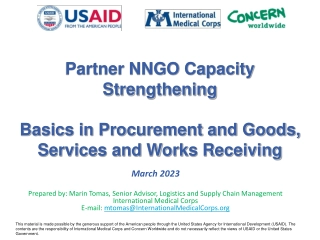
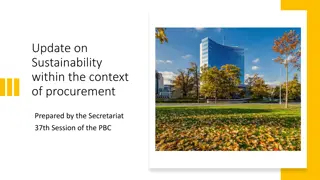


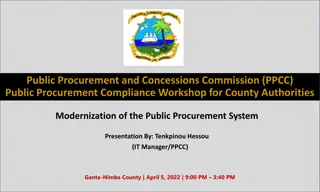
![Comprehensive Overview of Corruption Watch Submission on Public Procurement Bill [B18B-2023]](/thumb/138344/comprehensive-overview-of-corruption-watch-submission-on-public-procurement-bill-b18b-2023.jpg)
